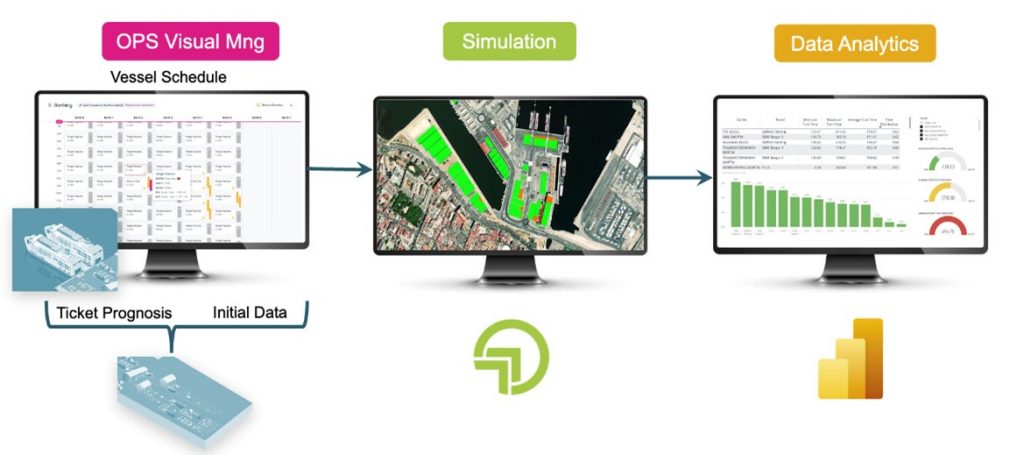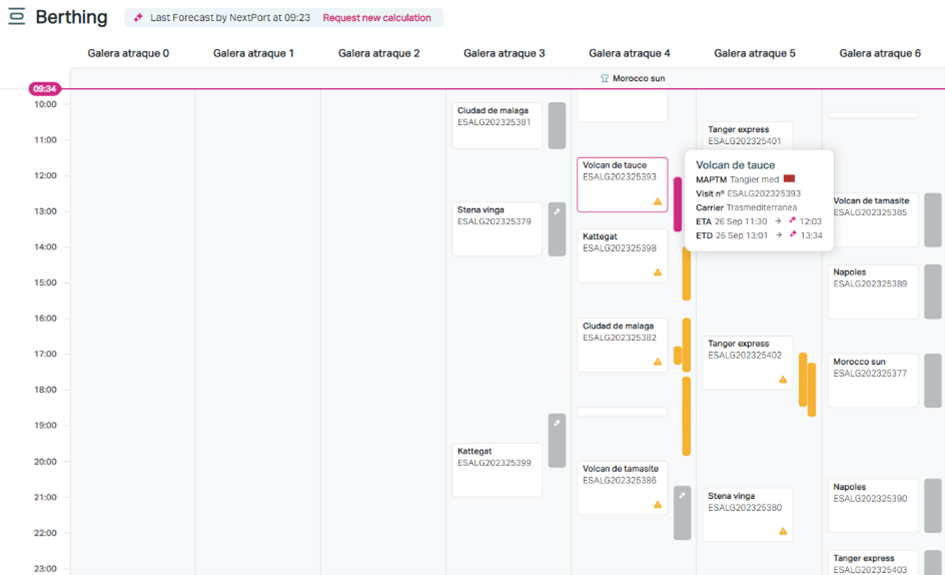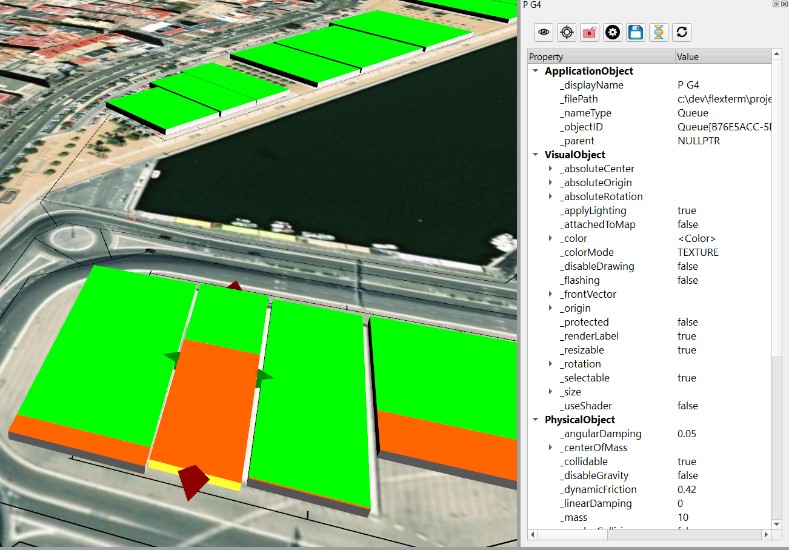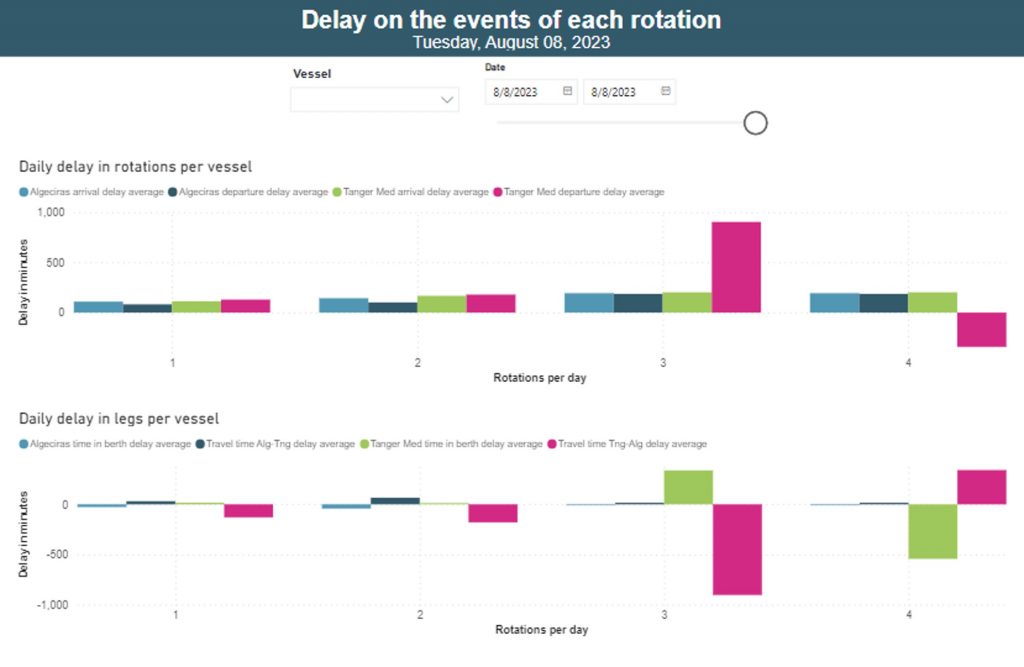The management of the Operation Crossing the Strait of Gibraltar (OPE) is a challenge for the Port Authority of the Algeciras Bay every year. In addition to the existing uncertainty about the exact flow of people and vehicles arriving at the port, there are also the logical deviations from the theoretical planning of the preset timetables for the ships.
It is therefore very complex to predict the level of filling of the port plots used for the reception and transit of vehicles through the port at a certain point in time.
Given the scenario described above, the aim of this pilot project was to simulate port operations during the OPE in order to identify conflicts and bottlenecks. The Flexterm tool, of recognised utility in the field of port process simulation, was used for the land part, while for the maritime part, artificial intelligence tools and algorithms developed in-house by the company NextPort were used for this project.
The system has been able to predict conflicts in advance and automatically propose solutions to them, thus providing prescriptive capabilities. It has also provided the user with metrics and key performance indicators, in the form of a dashboard, through data analysis.

The solution consists of the following components:
- Application for berth management:
The application developed helps to coordinate vessel port calls, providing accurate and reliable information based on the combination of multiple data sources and historical information on behavioural patterns, delays, produced in previous rotations, etc.
This application is equipped with an artificial intelligence layer with predictive functionalities, based on the use of machine learning algorithms, to generate a prediction of the estimated date of arrival at port (ETA) and analyse, based on these estimates, any future conflict of overlaps or port call delays, while recommending optimised replanning solutions.
Once any conflicts are identified, they are indicated in the berthing plan representation in an intuitive way through dialogues so that the user can then select one of the proposed alternatives.


- Simulator:
Next, the developed solution allows to evaluate the impact of this alternative on the road traffic management plots by means of a simulation model, which allows to close the planned decision-making process with a predictive feedback loop.
This simulator ingests predicted vehicle arrival data from ticket sales data and manually filters by the number of open or closed plots and the degree of occupancy limit in each of them.
As a result of the simulation, an analysis is obtained of the level of occupation predicted in the different plots and a distribution of waiting times for vehicles as they pass through the port; enabling operational anticipation by being able to size the number of areas to be used by increasing the arrival and evacuation capacity of vehicles or the modification of internal circuits through the port facilities.

- Data analytics dashboard:
Finally, the solution has an on-demand metrics representation and machine learning analytics to complement the generation of knowledge, not only from the simulator, but in general from all data sources and their combination, to analyse where ship delays are generated and find the cause of the problem.

The project’s innovaton:
- Treatment of historical and real-time data, with machine learning algorithms, to assist and improve decision-making in berth management.
- Use of the Flexterm tool to simulate the land operational process of the OPE in the Port of Algeciras.
- Development of prescription functionalities to improve decision-making based on the use of artificial intelligence.
- The combination of optimisation techniques together with simulation models to obtain an estimate of the impact, in a holistic manner, of the solutions developed.
The project’s product:
- Software prototype of a digital twin of the OPE process that allows more efficient management of ferry/RoPax vessel calls, determining their berthing, optimum time and date in the event of conflicts, taking into account the impact of such a decision on land operations.
Usability/application:
- The future product or decision support tool (based on the validated prototype) would be very useful for the operational management of docking points and waiting areas for vehicles dedicated to traffic in the Strait of Gibraltar during the OPE period.
- Likewise, the digital twin could be extended to other value chains such as Ro-Ro traffic and Container traffic: allowing the consumption of the predictive layer by other operational management applications of the Port Authority’s digital ecosystem.




Leave a Reply